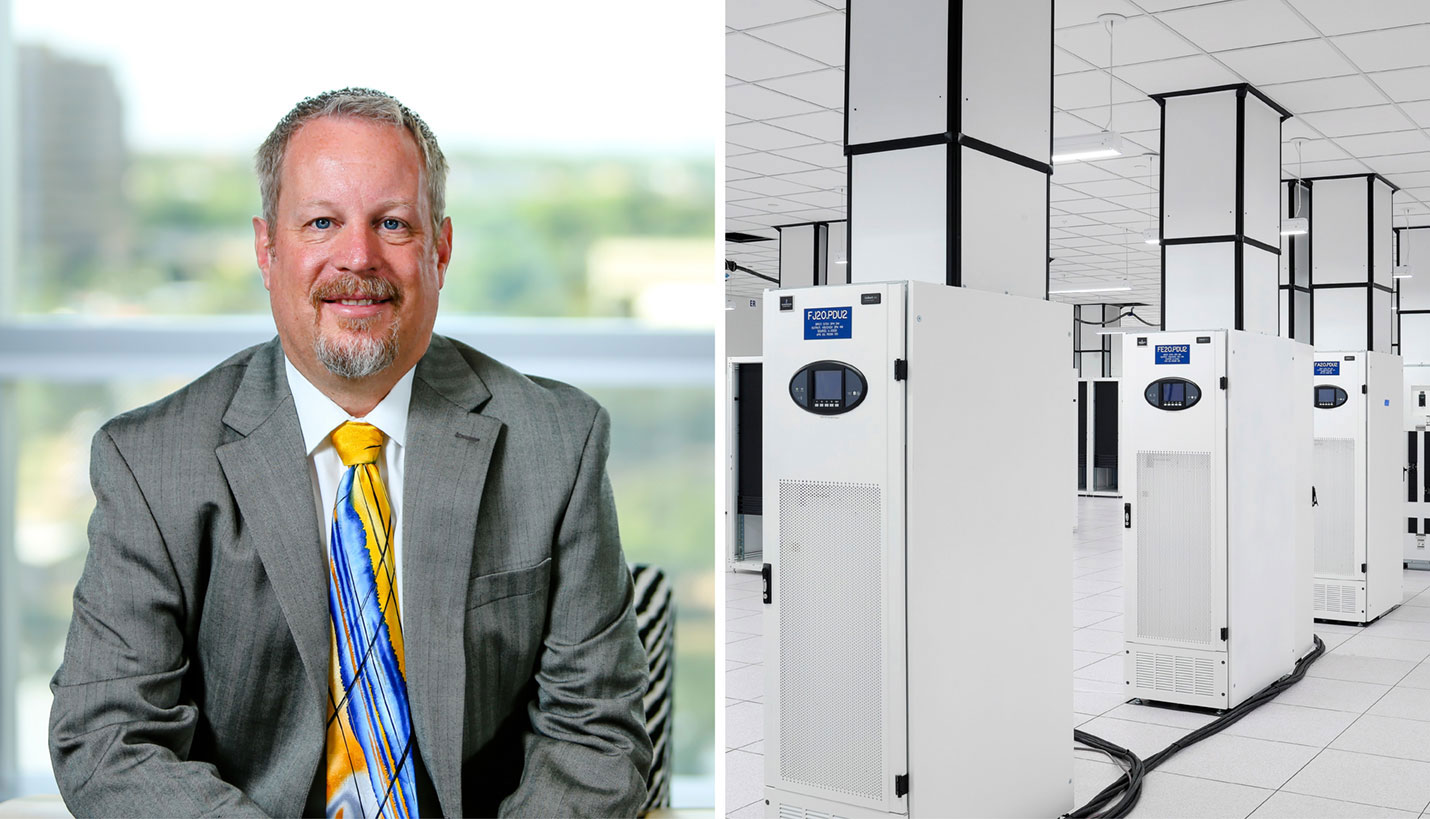

Andy Baxter On Data Center Trends
Building Construction + Design (BC+D) Magazine has released its 2016 rankings, and Page is the fourth largest in the Data Center Architecture Firm category. Page Principal Andy Baxter’s thoughts on integrated design-build delivery methods lead the accompanying BC+D article “Information Overload Is Pushing the Limits of Mission-Critical Facilities” by Mike Plotnick.
In the last eight years alone, Page has designed over 35 data centers valued at over $3.75B and ranging from Uptime Institute Tier II – Tier IV designs. The Mission Critical team is very familiar with the pressures to move at warp speed while remaining at the forefront of advances in facility design and construction. Below, Andy details the latest and greatest data center trends. Click here for the BC+D article.
Tell us about a few unique Page projects currently in design/construction.
We are completing the first of five 200,000-square-foot data centers for an 80MW campus in Garland, Texas. The client RagingWire is a large co-location provider. The facility will utilize indirect air-side economization (KyotoCooling) for all of the data center and mission critical spaces. One of the biggest drivers for this project was to provide highly efficient cooling without the use of any water. Another important design feature is portability: Depending on local conditions, the facility can be replicated around the country with only minor modifications required.
We are also working with software/service providers designing large-scale facilities that do not require mechanical cooling for the data center spaces. The spaces are cooled by direct evaporative cooling. The facilities leverage highly reliable networking systems as the backbone for the resiliency of the operations, reducing the necessary redundancy in the physical mechanical, electrical and plumbing (MEP) systems, thus reducing overall facility costs.
What are the emerging data center trends?
-
Edge Data Centers Latency concerns can be overcome by building data centers closer to the end user, or the edge of the network. Traditionally, data centers have been located in remote areas within larger regional markets such as Virginia, Texas, Colorado and Arizona. Content providers still have large data centers in these major markets, but now they will also have an edge data center in smaller regional markets and perhaps a micro-data center within many cities. As a result, we are pursuing work all over the country. The facilities are much more compact, repeatable and cost efficient — sometimes they are as small as a single rack.
-
Smart Reliability Typically Page has been sought out by clients for highly redundant data center designs. In the past, the reliability was provided through capital-intensive Tier III and IV facilities. Today if there is an equipment failure, resilient networks and software provide much of the reliability by rolling over data to another server or to a geographically isolated facility. Also, clients now make more informed decisions about how much reliability they really need. They are no longer building one-size-fits-all facilities and are opting to have varying levels of reliability within the same facility. As a result, more data centers are now designed with more traditional MEP systems for a lower cost. For example, older designs typically used chilled water plants, while current designs are utilizing rooftop units.
-
Lower Power Efficiency Utilization In a never-ending quest to reduce electricity operating costs through more efficient mechanical design, owners are focusing more than ever on innovative solutions. But it is becoming a cycle of diminishing returns: Facility designs below 1.5 power usage effectiveness (PUE) are common and getting as low as 1.2 PUE to 1.3 PUE is achievable, even at a reasonable premium. Reducing power consumption is also beginning to swing back to IT equipment providers (Decreased IT power consumption also diminishes the power required for the environmental systems cooling the equipment.). Clients increasingly require maximum power consumption numbers.
-
Private Clouds It appears large enterprise users (LEU) are transitioning to private clouds. Financial institutions and telecommunications companies are selling off large portions of their data center portfolio and moving to providers leasing “wholesale” chunks of white space. While they are keeping much of their core business, especially that which is regulated, in their facilities, they also are contracting out more day-to-day operations like email, personnel and human resources, accounting and document management, etc.
-
Protection from Electromagnetic Pulse (EMP) and/or Intentional Electromagnetic Interference (IEMI) attacks is discussed more and more. This has been especially true on facilities that are deemed critical to public safety and health, either by the government or other regulatory agencies. Recently, we have completed shielding designs for power company control facilities and 911 emergency call centers.
What are the future challenges or opportunities for Page in this sector?
The move away from high reliability, capital intensive Tier IV facilities means data centers are being built with simpler mechanical and electrical systems. Page faces more market competition for these projects because the design requires less expertise, which is our strength. Conversely, with the growing number of facilities looking at and implementing EMP/IEMI protection systems, we see a need for experienced design and construction for these facilities.
07/20/2016








